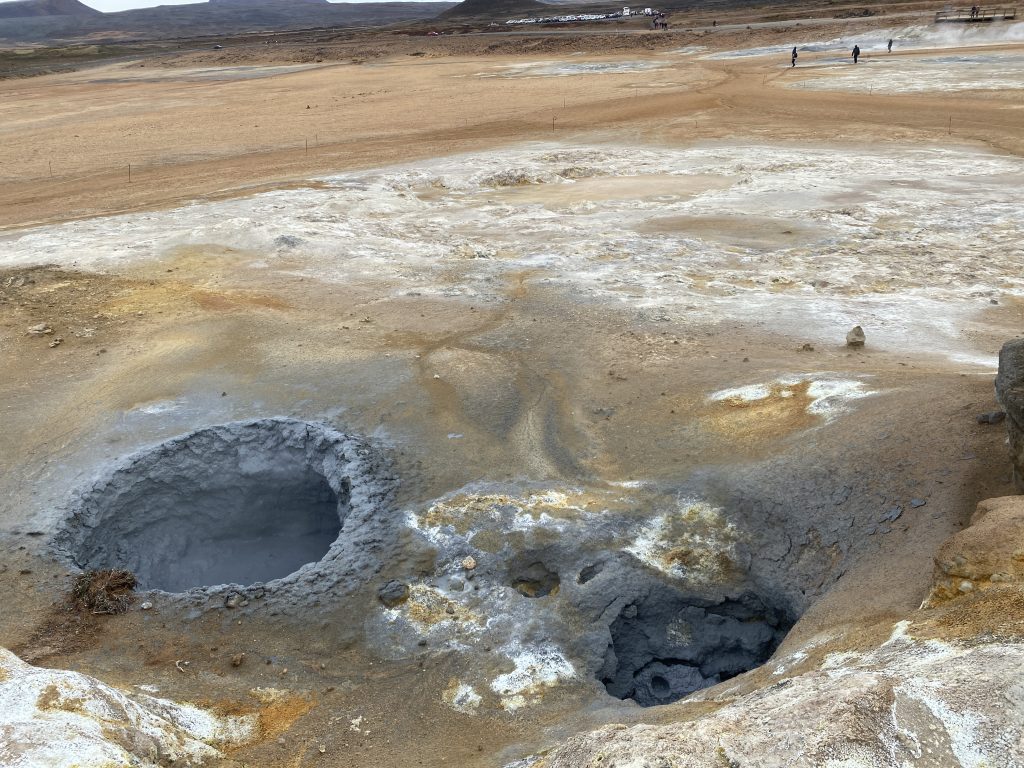Today we visited Hverir, east of Myvatn in the far north. This is a place of mudpots, fumaroles and sulphur depositing solfataras.
Upon leaving the (paid) parking lot, the first thermal feature encountered is a watery mudpots with several areas splashing up about 1/2 meter. It lies at the bottom of a dominant feature of the area, a low scarp along which most of the solfataras are located. This scarp is about 100 meters long. Behind it, to the east are several large steaming mounds, which are the remains of boreholes drilled while exporing for geothermal energy.
West of the scarp are several distinct grouping of mudpots, ranging is style from the watery to the thick. All consist of a gray mud, in contrast to the reddish brown surface mud.
The largest, southern group has a number of spouters along the northern boundary, as well as some large muddy craters.
Up on the hillside of Namafjall are deep ravines from which a small trickle of clear water runs down toward the mudpots. Did not explore up that way, as it was a cool day and there was little steam visible up there.
Afterwards we had a wet, windy visit to Leirhnjúkur, which is a new thermal area which formed as part of the activity of Krafla in the 1980s. There is a large colloidal pool up on the hillside, with some spouters along the uphill shore and mudpots sharing the pools basin.
We also stopped at the thermal shower along the road south of the Krafla powerplant.

